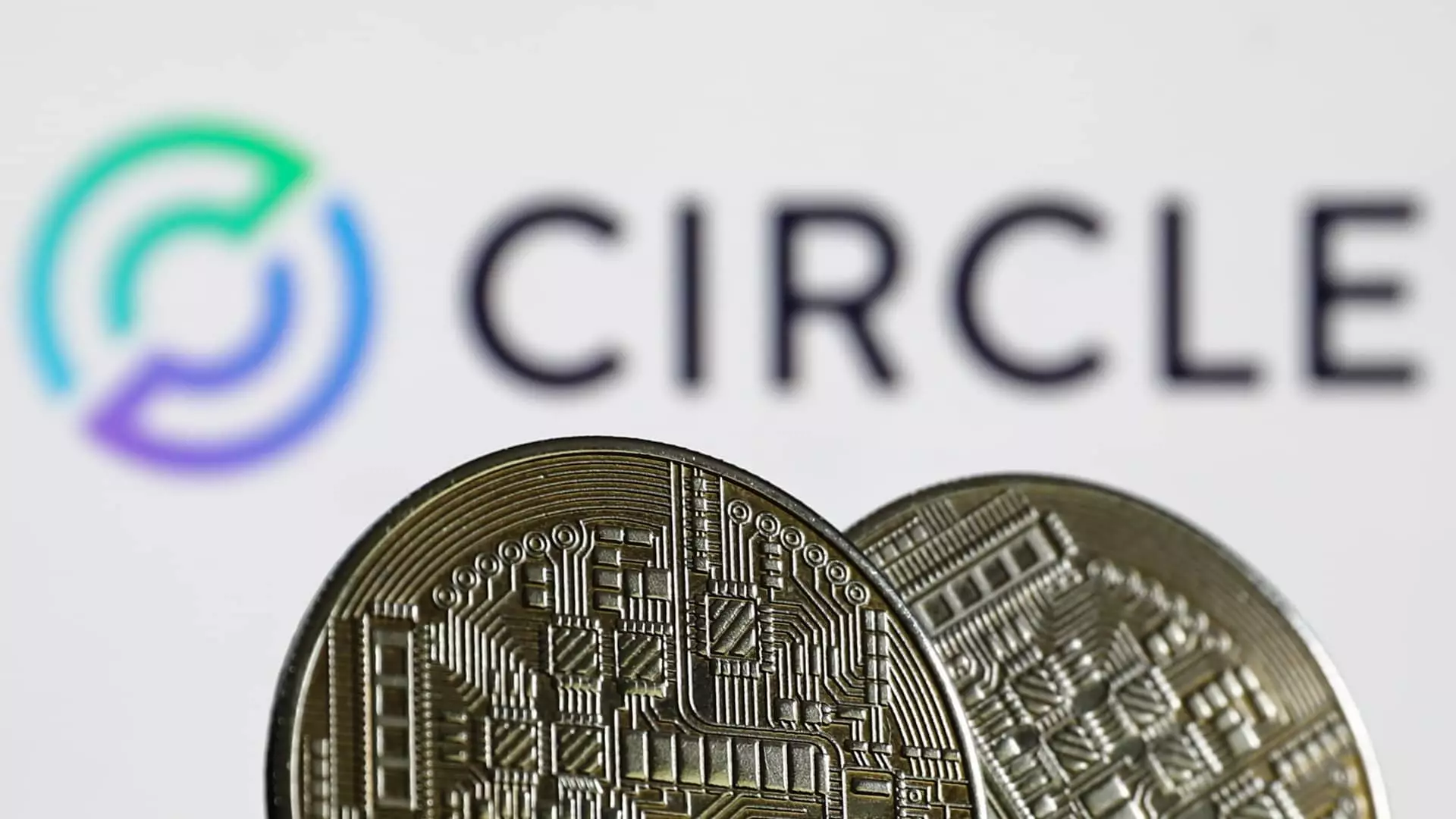As Circle takes significant steps toward launching its initial public offering (IPO), the implications for the crypto industry and the traditional financial sector cannot be understated. Valued at around $6 billion, Circle’s successful entry into the public markets could serve as a beacon of legitimacy for the largely unregulated realm of cryptocurrency. In a world where the digital currency landscape is overshadowed by uncertainty and skepticism, Circle’s USDC stablecoin stands out, boasting a market cap of roughly $62 billion. Yet, one must question whether this optimistic projection marks a milestone of innovation or a reckless gamble in the age of speculative finance.
Circle’s high-profile journey includes a filing to sell 24 million shares at an attractive projected price of $24 to $26. The initial interest from Cathie Wood’s ARK Investment Management, which is eyeing up to $150 million worth of shares, indicates that institutional confidence in crypto assets is building. However, beneath this surface optimism lies a sluggish reality: Tether continues to dominate the stablecoin market with a staggering 67% share. The pressures of such competition, the need for regulation, and the potential volatility associated with cryptocurrencies demand scrutiny.
Regulatory Framework: A Double-Edged Sword
The legislative landscape surrounding cryptocurrencies is slowly evolving, with recent Senate advances acting as a catalyst for Circle’s IPO endeavor. Yet, the efficacy of this newfound regulatory framework remains to be seen. The push for comprehensive crypto legislation could either bolster public confidence or inadvertently stifle innovation as regulatory bodies clamp down on what has traditionally been a free-spirited marketplace.
Understandably, the prospect of regulatory oversight raises concerns about unprecedented bureaucracy. It paradoxically forces promising companies like Circle to navigate the same stifling red tape that has historically plagued traditional financial institutions. Policymakers who aim to tightly control stablecoins may unintentionally inhibit healthy competition, thus severely undermining the very benefits they are striving to deliver. Instead of fostering innovation, legislation could pose a threat to the dynamic nature that makes cryptocurrencies pioneering.
The Potential Impacts on Coinbase
The intricate relationship between Circle and Coinbase further complicates the narrative. With a revenue-sharing agreement that splits income from USDC transactions, Coinbase stands to either gain or suffer from Circle’s IPO performance. This connection raises important questions: Will Circle’s financial success elevate Coinbase, or will it expose the platform’s vulnerabilities? The prospect of USDC becoming the premier stablecoin—once merely a “stretch goal” for Coinbase—now becomes a looming necessity that dictates the platform’s trajectory.
Investors should tread carefully here; the success of Circle could inadvertently push Coinbase into a position of overreliance on USDC revenue. The long-term dynamics of such interdependencies can lead to complacency, where innovation succumbs to a focus on maintaining the status quo. For Coinbase to continue thriving in an increasingly convoluted market, it must diversify its offerings and not anchor its future on the whims of a potentially volatile stablecoin.
The Promise and Peril of Stablecoins
Stablecoins have risen to fame as instruments of liquidity and efficiency in financial transactions. They offer a unique advantage by offering a bridge that enables swift dollar transfers across boundaries, presenting a favorable option for banks and fintech ventures alike. Yet, this newfound utility generates debates about the implications of cementing the U.S. dollar’s global dominance.
While some hail stablecoins as tools that can promote economic empowerment, others argue they could reinforce harmful imbalances in global finance. The export of dollar utility may inadvertently entrench American economic supremacy while overshadowing local currencies in developing nations. This duality highlights the necessity of a cautious examination of stablecoins, encouraging stakeholders to recognize the broader implications tied to their proliferation.
In this burgeoning landscape of technology and finance, Circle’s IPO is more than just a corporate milestone; it’s a pivotal moment that could redefine the parameters within which cryptocurrency and stablecoins operate. In a sector often characterized by volatility and upheaval, one must reflect comprehensively on what those changes mean for the future of both finance and society. Circle’s journey could herald a new dawn, but it’s essential to proceed with both optimism and caution as we navigate this transformative phase.

